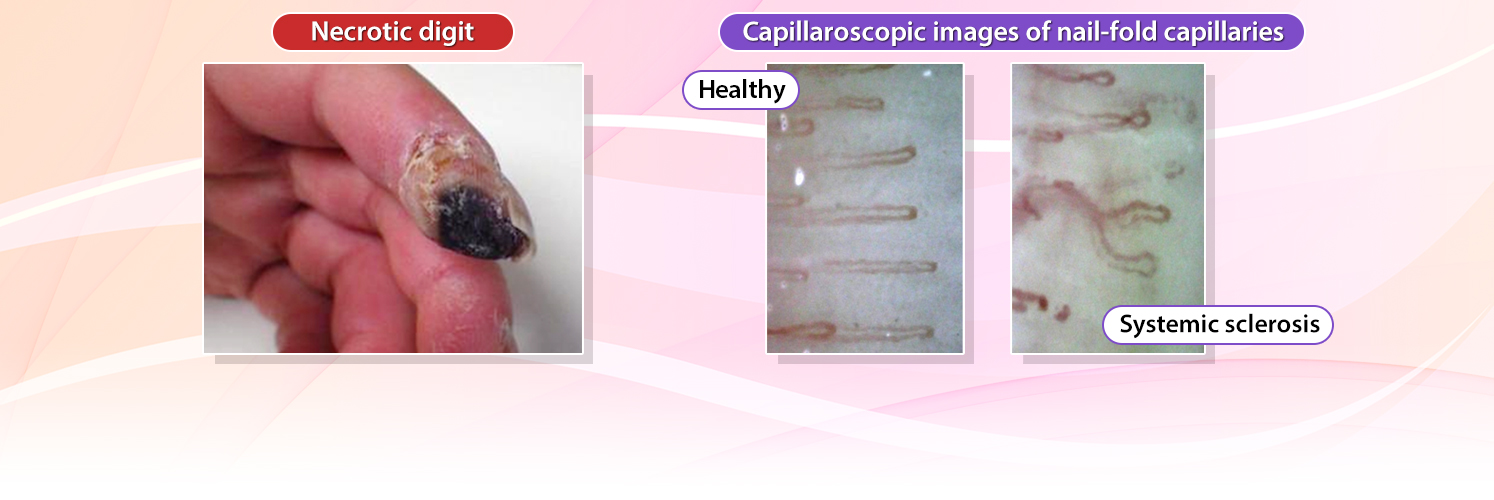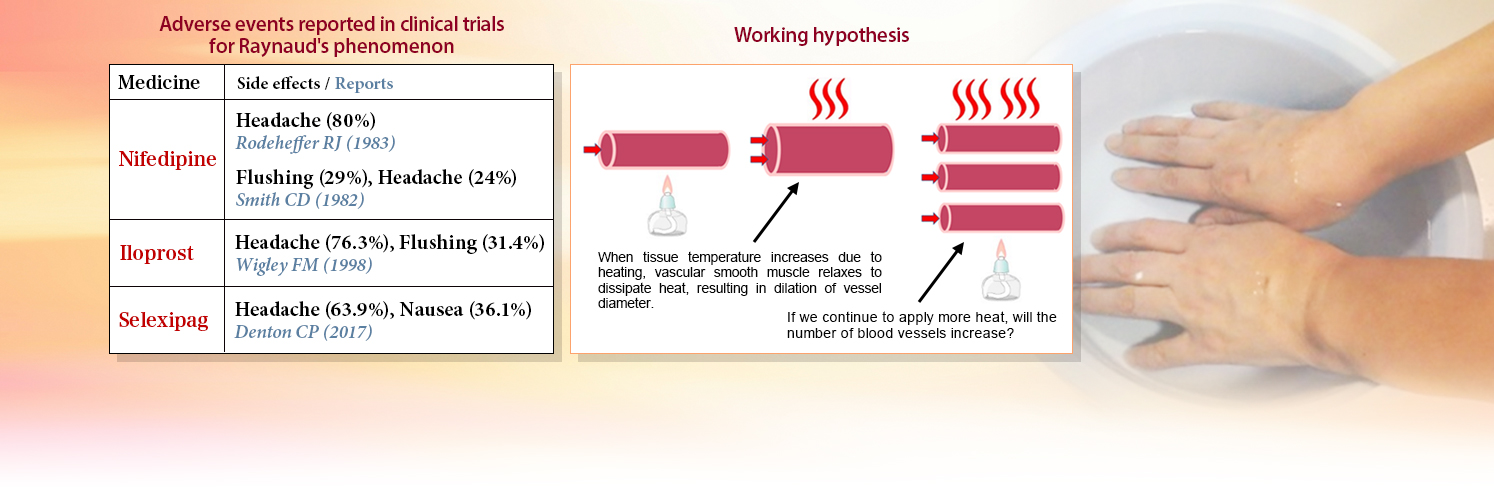Effects of heating on the body and therapeutic effects of heating in circulation and musculoskeletal disorders.
We aimed to scientifically investigate the effects of heat stimulation on the body and determine whether heat stimulation has therapeutic effects in circulation disorders of the extremities and disorders of the muscles and joints. We hypothesized that heat stimulation would increase the blood flow and improve capillary disorders via the regulation of angiogenesis factors. We also hypothesized that heat stimulation would reduce the dynamic resistance of the tendon and tendon sheath.
In collagen diseases, especially systemic sclerosis (scleroderma), a symptom called "Raynaud's phenomenon" occurs, in which the skin of the fingers and other parts of the body discolors upon cold stimulation. This phenomenon is caused by damaged and tortuous capillaries which are distinctive features of such diseases. As such, blood flow is poor to begin with. In a healthy state, the capillaries of the fingertips are straight and hairpin-like, but in people with scleroderma, the meandering is severe and thus blood flow gradually ceases, and the capillaries disappear. In this condition, blood vessels constrict, and blood flow is extremely reduced when exposed to cold stimuli.
In such a condition, even if medication is taken or injected, it does not easily reach the affected area because of the poor blood flow at the fingertips in the first place. As the medication only stays where blood flow is still high, vasodilation occurs in unnecessary places, resulting in a high frequency of side effects.
Does continuous warming increase the number of blood vessels?
Therefore, we wondered if we could improve blood circulation by stimulating blood vessels from the outside. When heat is applied to a tissue, its temperature rises. This causes the blood vessels in it to widen in order to promote physiological heat dissipation. We hypothesized that if we continue to apply heat, the number of blood vessels might increase.
As Raynaud's phenomenon often appears in the hands, many patients soak their hands in hot water to alleviate their symptoms. This hampers their activities of daily living.
Therefore, to "keep warm," heating must be directed at an area other than the hands. Thus, we first decided to investigate if the effect of warming differed depending on the site warmed.







